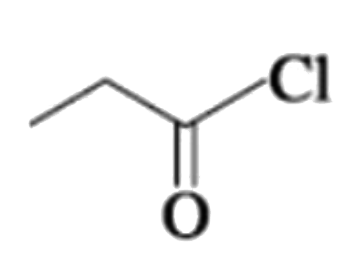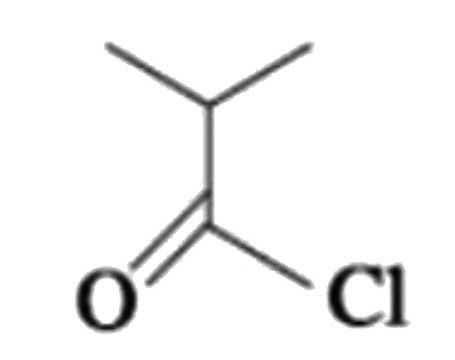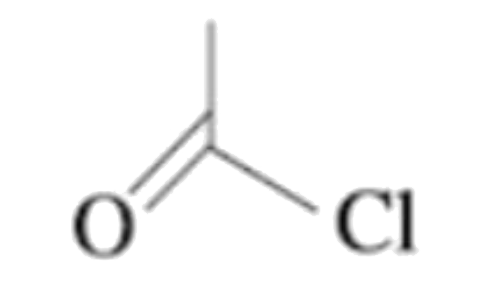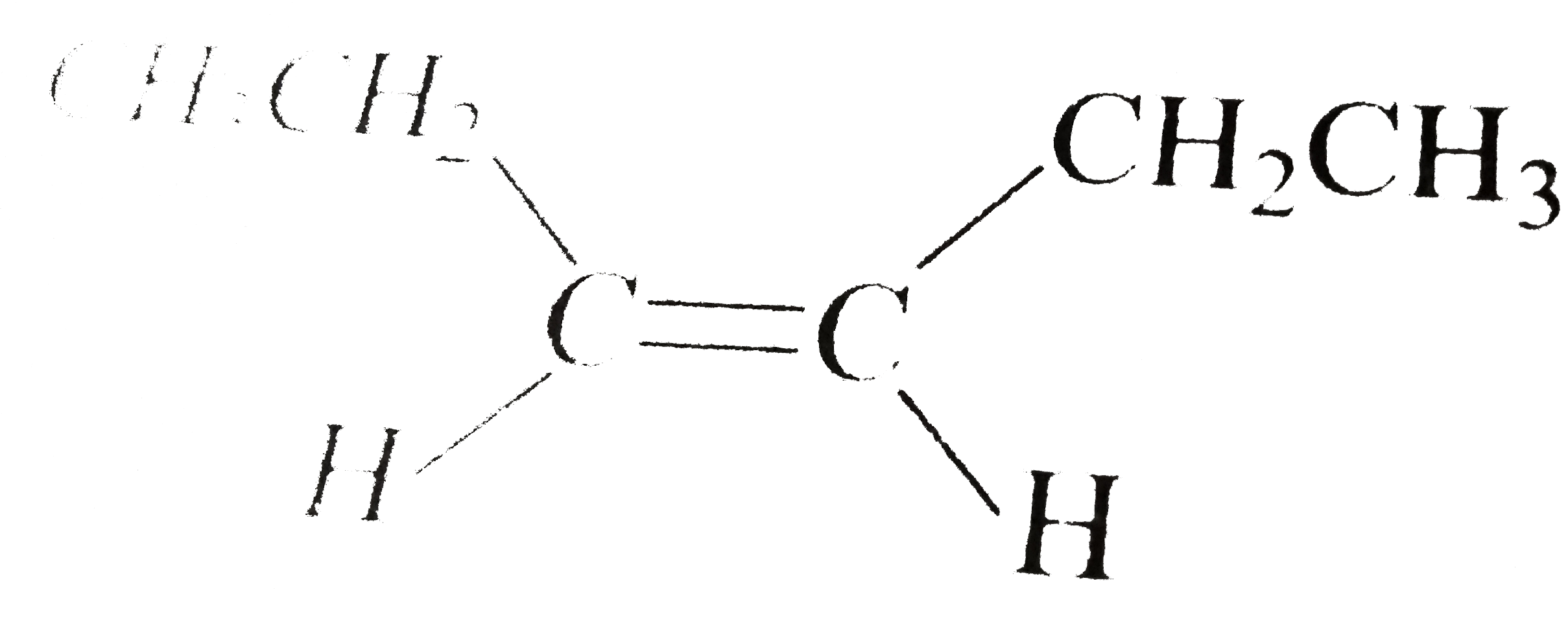Which of the following will produce isopropyl amine -
(I) (CH3)2CONH2OH−−−−→XLiAlH4−−−→
(II) CH3−CH2−CHONH3−−→heatXLiAlH4−−−→
(III) (CH3)2CH−OH+PCl5→XNH3−−→
(IV) CH3−CH2−CH2−NH2heat−−→
I, II
II, III
I, III
IV only
The correct Answer is:C
To determine which of the given reactions will produce isopropyl amine, let's analyze each option step by step.
Step 1: Analyze Reaction (I)
The first reaction is:
(CH3)2CONH2OH→XLiAlH4→
1. Formation of Hydroxylamine:
- Acetone (CH3)2CO reacts with hydroxylamine (NH2OH) to form an oxime. The reaction can be represented as:
(CH3)2CO+NH2OH→(CH3)2C=NOH+H2O
- This compound is called acetone oxime.
2. Reduction with Lithium Aluminum Hydride:
- Lithium aluminum hydride (LiAlH4) is a strong reducing agent that reduces the oxime to the corresponding amine:
(CH3)2C=NOH+LiAlH4→(CH3)2CH−NH2+H2O
- The product is isopropyl amine (C3H9N).
Conclusion for Reaction (I):
- Produces Isopropyl Amine.
---
Step 2: Analyze Reaction (II)
The second reaction is:
CH3−CH2−CHONH3heat→XLiAlH4→
1. Formation of Imine:
- Propanal (CH3−CH2−CHO) reacts with ammonia (NH3) upon heating to form an imine:
CH3−CH2−CHO+NH3→CH3−CH2−CH=NH+H2O
2. Reduction with Lithium Aluminum Hydride:
- The imine can then be reduced by lithium aluminum hydride:
CH3−CH2−CH=NH+LiAlH4→CH3−CH2−CH2−NH2
- The product is n-propyl amine (C3H9N), not isopropyl amine.
Conclusion for Reaction (II):
- Does not produce Isopropyl Amine.
---
Step 3: Analyze Reaction (III)
The third reaction is:
(CH3)2CHOH+PCl5→XNH3→
1. Formation of Alkyl Chloride:
- The alcohol (CH3)2CHOH reacts with phosphorus pentachloride (PCl5) to form an alkyl chloride:
(CH3)2CHOH+PCl5→(CH3)2CCl+POCl3+HCl
2. Nucleophilic Attack by Ammonia:
- The alkyl chloride then reacts with ammonia:
(CH3)2CCl+NH3→(CH3)2C−NH2+HCl
- The product is isopropyl amine (C3H9N).
Conclusion for Reaction (III):
- Produces Isopropyl Amine.
---
Step 4: Analyze Reaction (IV)
The fourth reaction is:
CH3−CH2−CH2−NH2heat→
1. Heating Primary Amine:
- Heating a primary amine like propyl amine does not lead to the formation of isopropyl amine. Instead, it may lead to the elimination of ammonia or other products but not isopropyl amine.
Conclusion for Reaction (IV):
- Does not produce Isopropyl Amine.
---
Final Conclusion:
The reactions that produce isopropyl amine are:
- (I) and (III).
Answer:
C. (I) and (III).
---
The first reaction is:
(CH3)2CONH2OH→XLiAlH4→
- Acetone (CH3)2CO reacts with hydroxylamine (NH2OH) to form an oxime. The reaction can be represented as:
(CH3)2CO+NH2OH→(CH3)2C=NOH+H2O
- This compound is called acetone oxime.
- Lithium aluminum hydride (LiAlH4) is a strong reducing agent that reduces the oxime to the corresponding amine:
(CH3)2C=NOH+LiAlH4→(CH3)2CH−NH2+H2O
- The product is isopropyl amine (C3H9N).
- Produces Isopropyl Amine.
The second reaction is:
CH3−CH2−CHONH3heat→XLiAlH4→
- Propanal (CH3−CH2−CHO) reacts with ammonia (NH3) upon heating to form an imine:
CH3−CH2−CHO+NH3→CH3−CH2−CH=NH+H2O
- The imine can then be reduced by lithium aluminum hydride:
CH3−CH2−CH=NH+LiAlH4→CH3−CH2−CH2−NH2
- The product is n-propyl amine (C3H9N), not isopropyl amine.
- Does not produce Isopropyl Amine.
The third reaction is:
(CH3)2CHOH+PCl5→XNH3→
- The alcohol (CH3)2CHOH reacts with phosphorus pentachloride (PCl5) to form an alkyl chloride:
(CH3)2CHOH+PCl5→(CH3)2CCl+POCl3+HCl
- The alkyl chloride then reacts with ammonia:
(CH3)2CCl+NH3→(CH3)2C−NH2+HCl
- The product is isopropyl amine (C3H9N).
- Produces Isopropyl Amine.
The fourth reaction is:
CH3−CH2−CH2−NH2heat→
- Heating a primary amine like propyl amine does not lead to the formation of isopropyl amine. Instead, it may lead to the elimination of ammonia or other products but not isopropyl amine.
- Does not produce Isopropyl Amine.
The reactions that produce isopropyl amine are:
- (I) and (III).
C. (I) and (III).
Topper's Solved these Questions
- AMINESBOOK - DISHA PUBLICATIONCHAPTER - AMINESEXERCISE - Exercise - 1 : Concept Builder (Topicwise)(TOPIC - 2 : Cyanides and Isocyanides)
9 Videos
- AMINESBOOK - DISHA PUBLICATIONCHAPTER - AMINESEXERCISE - Exercise - 1 : Concept Builder (Topicwise)(TOPIC - 3 : Concept Applicator)
13 Videos
- AMINESBOOK - DISHA PUBLICATIONCHAPTER - AMINESEXERCISE - Exercise - 2 : Concept Applicator
30 Videos
- ALDEHYDES, KETONES AND CARBOXYLIC ACIDSBOOK - DISHA PUBLICATIONCHAPTER - ALDEHYDES, KETONES AND CARBOXYLIC ACIDSEXERCISE - Exercise - 2 : Concept Applicator
27 Videos
- BIOMOLECULES BOOK - DISHA PUBLICATIONCHAPTER - BIOMOLECULES EXERCISE - Exercise - 2 : Concept Applicator
30 Videos
Similar Questions
Knowledge Check
C4H7OClNH3−−→C4H9ONBr2−−→KOHCH3CH2CH2NH2 Compound (X) is
A B
B C
C D
D
2CH3COCH3dil.NaOH−−−−−→XNH3−−→Y Y is :
AMesityl oxideB2-ButeneC2-ButenalDDiacetone amineCH3CH2C=ChNaNH2/NH3(l)−−−−−−−−−−→CH3CH2Br−−−−−−→Li,NH3(l)→
ACH3CH2C=CH=CH−CH3BCH3CH2CH=CH2C D
D
CH3CH2CH2OHPBr5−−→(A)KOH(Alc)−−−−−−→(B)HBr−−→(C)NH3−−→(D)
View SolutionCH3−C≡C−CH3Na−−−−→liq.NH3(A)cold.KMnO4−−−−−−−→(B)
View SolutionCH3CH2C≡CHNaNH2/NH3(liq.)−−−−−−−−−−−−→
CH3CH2Br−−−−−−→Li,NH3(liq)−−−−−−−→
View SolutionHC≡CHHgSO4−−−→H2SO4CH3CH2CH2Br−−−−−−−−−→PBr3−−→
View SolutionMe−O∣∣C−O−CH2−CH2−⊕NH2NaOH−−−→Q
View Solution
